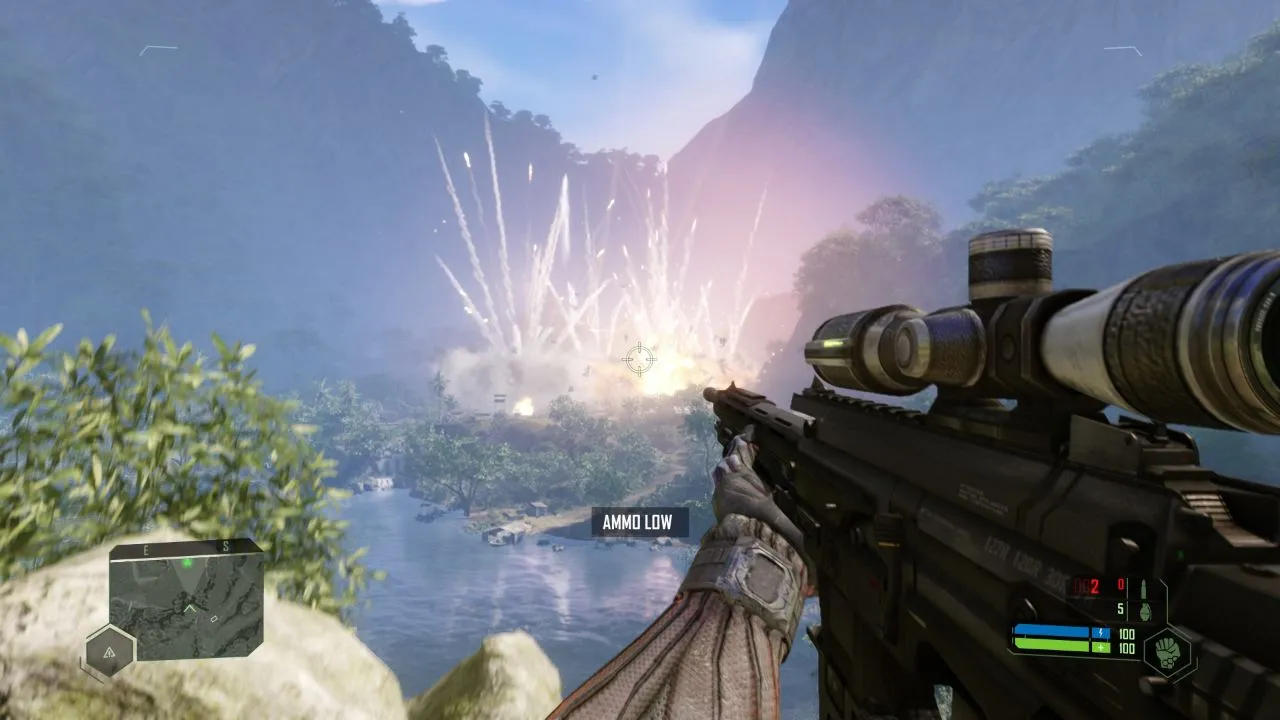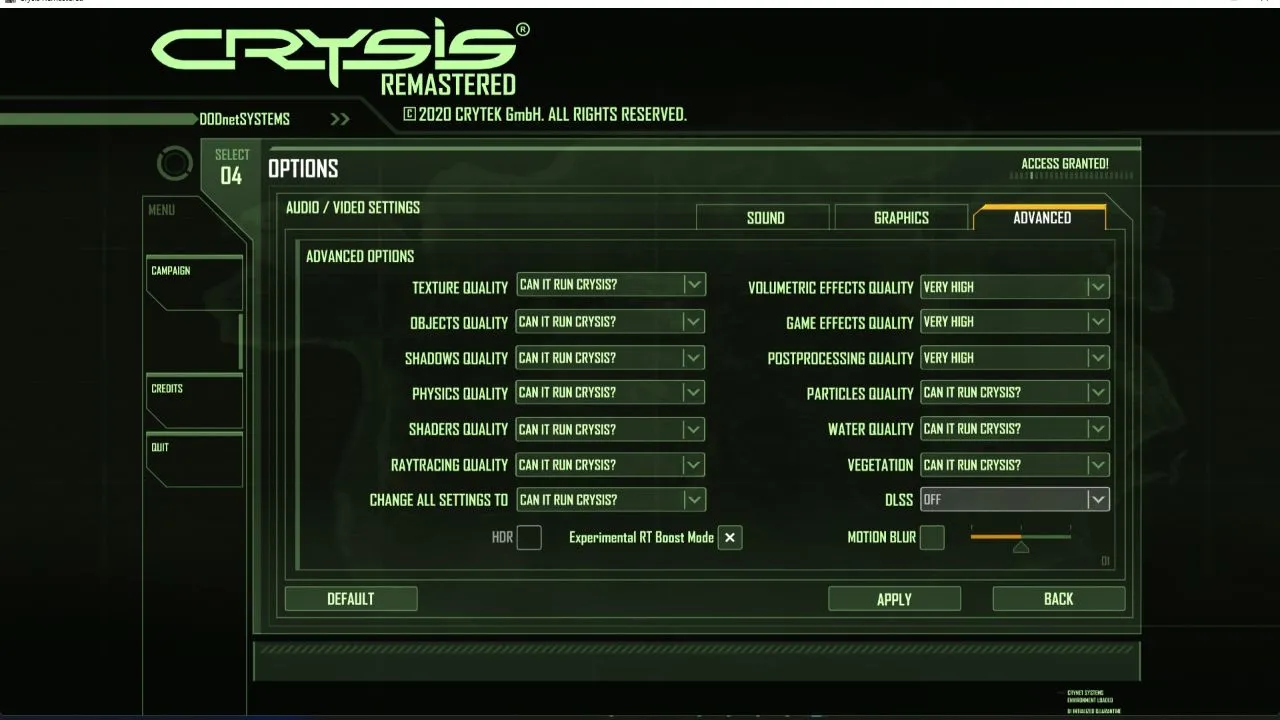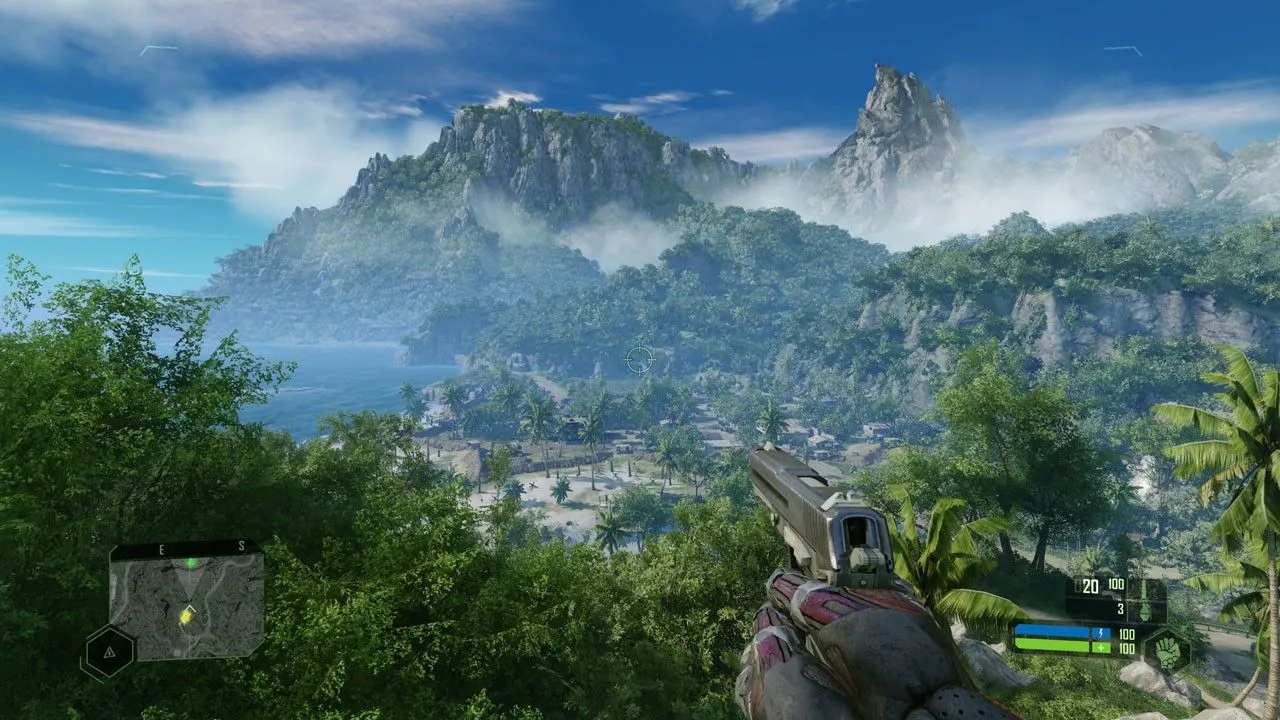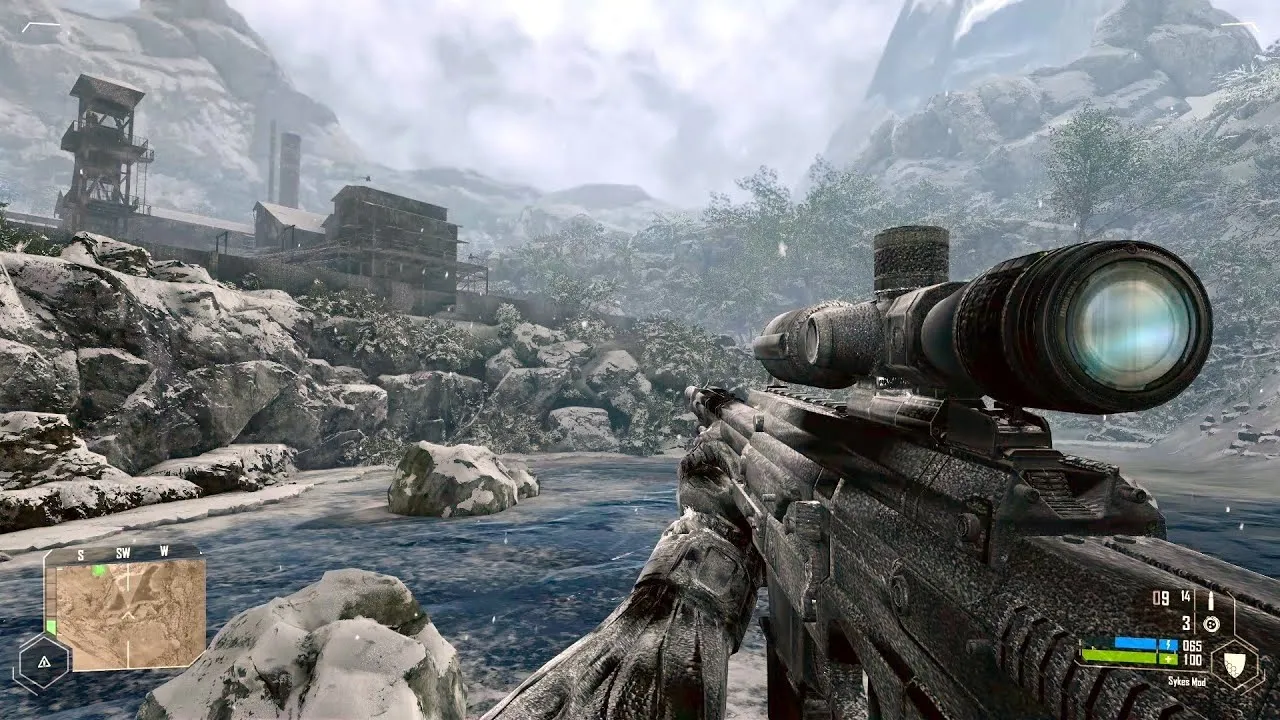
Crysis Remastered: A Visual Masterpiece Hampered by Legacy Issues
The term “hardware killer” has been around since the early 2000s, with games like Far Cry, DOOM 3, and Half-Life 2 pushing the limits of even the most powerful PCs. However, it wasn’t until 2007, with the release of Crysis, that the title truly found a worthy recipient. For years, the question “Can it run Crysis?” became the benchmark for PC gaming prowess. Even powerful consoles like the Xbox 360 and PlayStation 3 struggled to handle its demanding visuals.
Despite the passage of time and the arrival of graphically stunning titles like Assassin’s Creed Odyssey, Ghost of Tsushima, and even the GPU-melting New World, Crysis retains a special place in the hearts of gamers and tech enthusiasts. It’s still occasionally used as a benchmark for cutting-edge hardware. This enduring legacy, coupled with the recent trend of remastering classic games, led Crytek to revive the Crysis Trilogy with their own “Remastered” treatment. This review focuses on Crysis Remastered, the first and arguably most impactful entry in the series. Does it live up to the hype, or is it merely a relic of the past? Let’s dive in.
 Crysis Remastered – Lush Jungle Environment
Crysis Remastered – Lush Jungle Environment
A Timeless Visual Feast
Spending just 30 minutes with Crysis Remastered is enough to appreciate its visual fidelity. Even for a remastered title from 2007, the graphics are stunningly beautiful and realistic by modern standards. Crytek, driven by a desire to create a powerful engine with cutting-edge graphics, achieved unexpected success with Far Cry in 2004. Losing the franchise to Ubisoft fueled their ambition for Crysis, which served as both a redemption story and a showcase for their groundbreaking CryEngine.
Crysis significantly surpassed the graphical standards of its time, with many modern realistic-style games still falling short of its achievements. The game’s use of polygons was revolutionary, with the protagonist’s nanosuit alone comprising 67,252 polygons. Supporting characters were rendered with over 22,000 polygons. To put this in perspective, God of War 3, a visually impressive game for the PlayStation 3 released three years later, featured Kratos with roughly 20,000 polygons, and even then, the console struggled to maintain a stable frame rate.
 Crysis Remastered – Detailed Nanosuit
Crysis Remastered – Detailed Nanosuit
Crysis‘s polygon count rivals modern titles like God of War (2018) and Red Dead Redemption 2. Despite retaining the original character models, they don’t appear stiff or dated like some remastered games from the same era. Beyond polygons, Crysis pioneered advanced technologies like real-time shadows, integrated physics, and impressive lighting effects, setting a new benchmark for visual fidelity. Its 1080p texture resolution also surpassed the 720p standard of the time. Even back in 2007, running the game at high settings required a powerful rig.
 Crysis Remastered – Enhanced Textures
Crysis Remastered – Enhanced Textures
So, what improvements does Crysis Remastered offer? The most noticeable upgrade is the 8K texture resolution, resulting in crisp and clear visuals even on the most advanced displays. Fine details, like the intricate designs on alien machinery and the pristine white sand beaches, truly shine. Furthermore, Crytek has implemented software-based ray tracing, a result of their ambitious project following Crysis 3. Their Sparse voxel octree global illumination (SVOGI) technology, developed in 2013 and integrated into CryEngine, predates NVIDIA and Microsoft’s hardware-based ray tracing solutions by five years.
 Crysis Remastered – Software-Based Ray Tracing
Crysis Remastered – Software-Based Ray Tracing
SVOGI utilizes the CPU to calculate light and reflections, simulating global illumination through software. Global illumination remains a challenging aspect of ray tracing in games, requiring significant processing power for subtle yet impactful visual improvements. Even with dedicated ray tracing hardware, few games have fully embraced this technology. Crysis Remastered’s implementation, while demanding on system resources, allows users with older GPUs to experience these effects.
 Crysis Remastered – Tropical Paradise
Crysis Remastered – Tropical Paradise
Crytek also added ray-traced reflections, further enhancing the realism and bringing the visuals closer to modern ray-traced games like Far Cry 6. Comparing the two tropical paradises side-by-side, it’s difficult to fault Crysis Remastered‘s graphics. Enhanced post-processing effects, improved explosions, and increased draw distance further contribute to the visual spectacle.
 Crysis Remastered – Enhanced Explosions
Crysis Remastered – Enhanced Explosions
Legacy Issues Hold It Back
Despite its graphical prowess, Crysis Remastered suffers from several issues, both inherited from the original and newly introduced. Lingering bugs, like conflicts with certain input software, are minor annoyances. However, the game’s reliance on only two CPU cores presents a significant bottleneck. While understandable in 2007, this limitation hinders performance on modern multi-core processors, causing stuttering and inconsistent frame rates even on high-end systems.
 Crysis Remastered – Ray Traced Interiors
Crysis Remastered – Ray Traced Interiors
This bottleneck diminishes the experience, making Crysis Remastered a new generation hardware killer, albeit for the wrong reasons. Furthermore, the remastering process, based on the graphically reduced console versions rather than the original PC release, resulted in the omission of certain features. Missing elements like interactive foliage, volumetric clouds, and fog effects are noticeable to those familiar with the original. While seemingly minor, these details contributed to the game’s immersive environment and showcased the developers’ attention to detail.
 Crysis Remastered – Performance Issues
Crysis Remastered – Performance Issues
 Crysis Remastered – Reduced Effects
Crysis Remastered – Reduced Effects
 Crysis Remastered – Frame Rate Fluctuations
Crysis Remastered – Frame Rate Fluctuations
In conclusion, Crysis Remastered offers a stunning visual experience, even by today’s standards. However, the legacy issues and omissions prevent it from reaching its full potential. While it undoubtedly looks beautiful, the performance problems and missing features detract from the overall experience, especially for those who remember the original’s groundbreaking impact.





Comments (0)